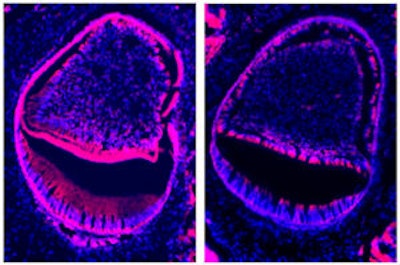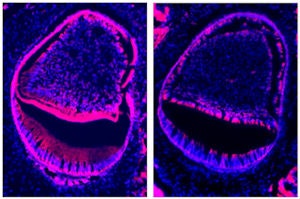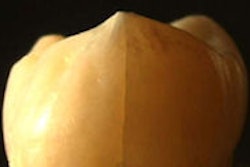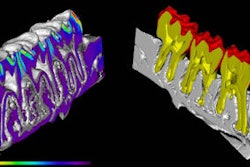
Researchers at Oregon State University have identified the gene that ultimately controls the production of tooth enamel, a significant advance that they say could lead to the repair of damaged enamel, according to a university press release.
The gene, called Ctip2, is a "transcription factor" that was already known to have several functions -- in immune response and the development of skin and the nervous system.
 |
| In a normal mouse tooth (left), ameloblast cells that produce tooth enamel glow in red. In a tooth with the Ctip2 gene deleted (right), little enamel has been able to form. Image courtesy of Oregon State University. |
The researchers used a laboratory mouse model in which the Ctip2 gene has been removed and its protein is missing. Such mice lack basic biological systems and cannot live after birth, but allow scientists to study what is there and what's missing, Kioussi noted. In this case, the mice had rudimentary teeth ready to erupt, but they lacked a proper enamel coating and never would have been functional.
With an understanding of its genetic underpinning, it may be possible to use tooth stem cells to stimulate the growth of new enamel, Kioussi said.
"A lot of work would still be needed to bring this to human applications, but it should work," she said. "It could be really cool, a whole new approach to dental health."
The findings are published in the Proceedings of the National Academy of Science.
Copyright © 2009 DrBicuspid.com



















